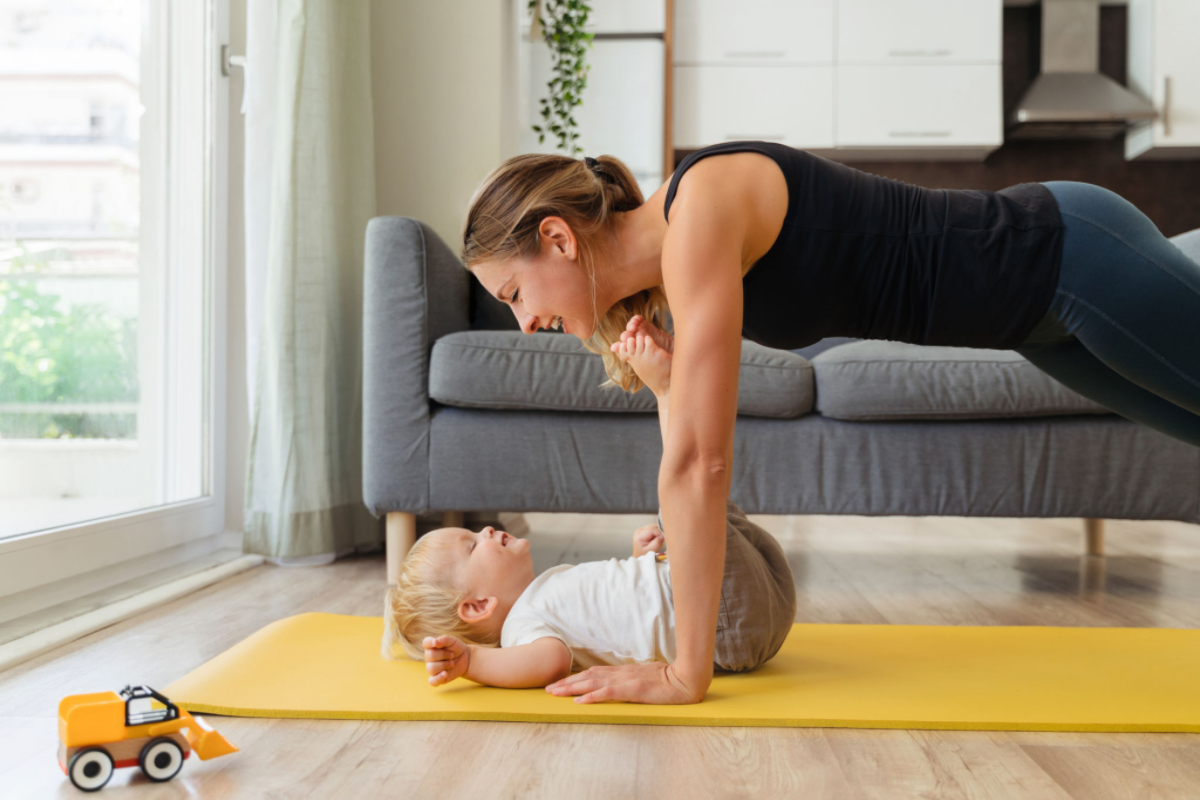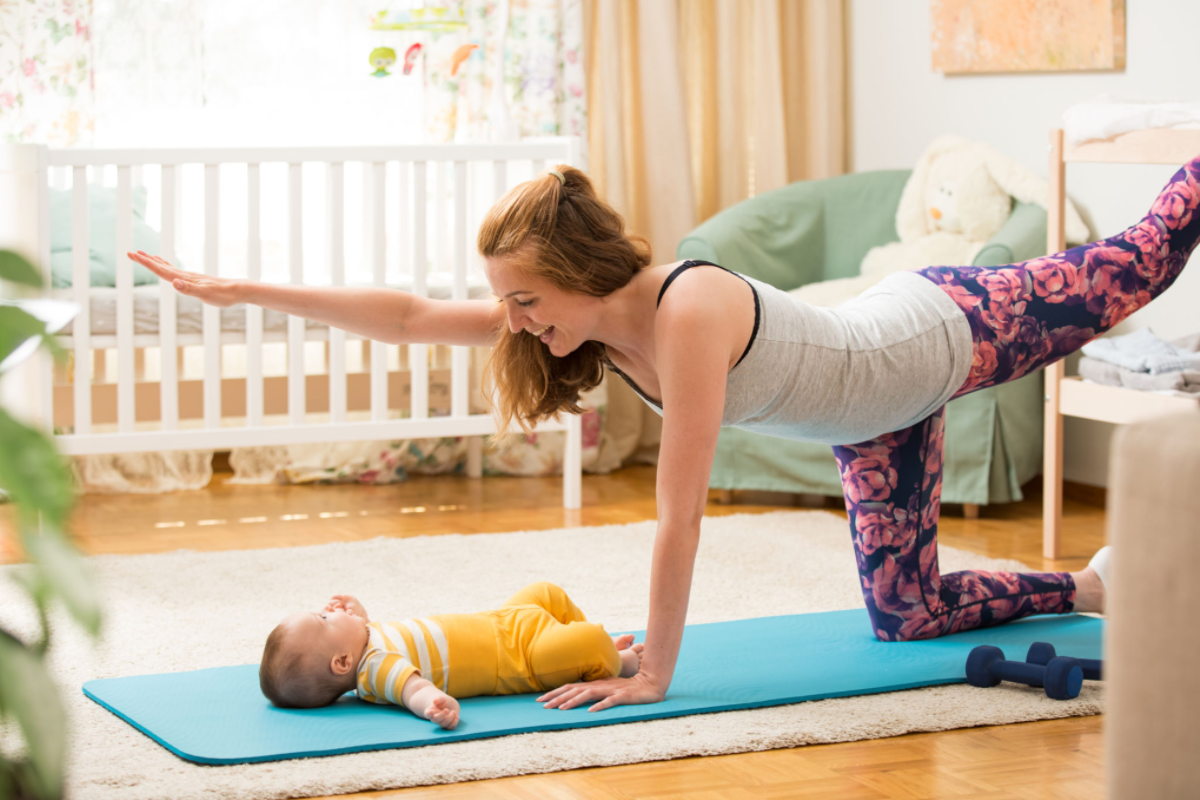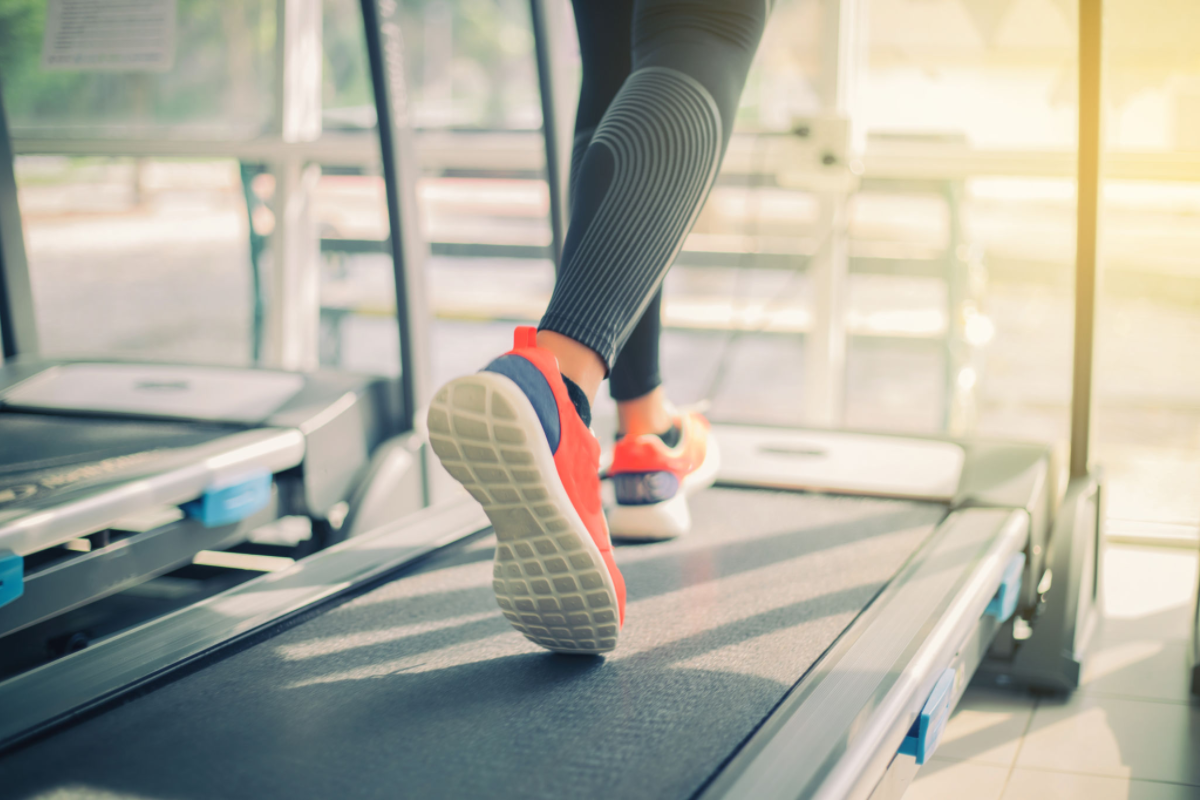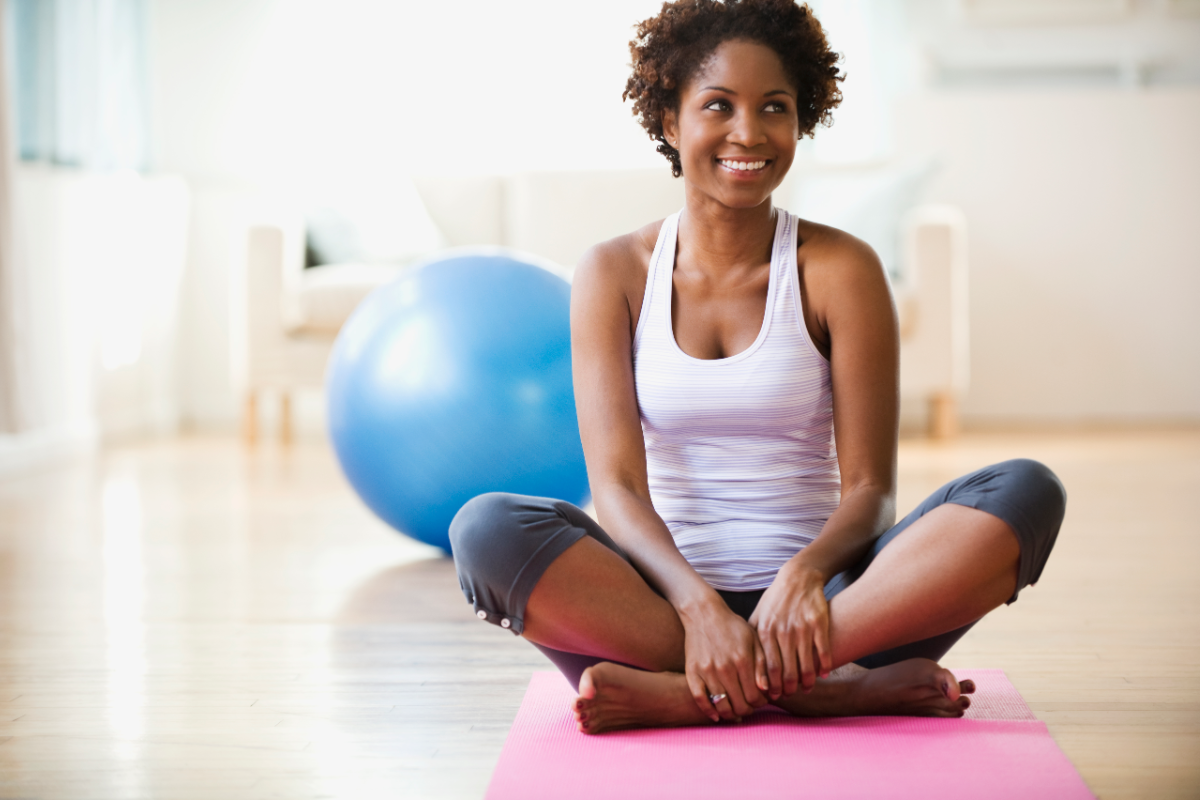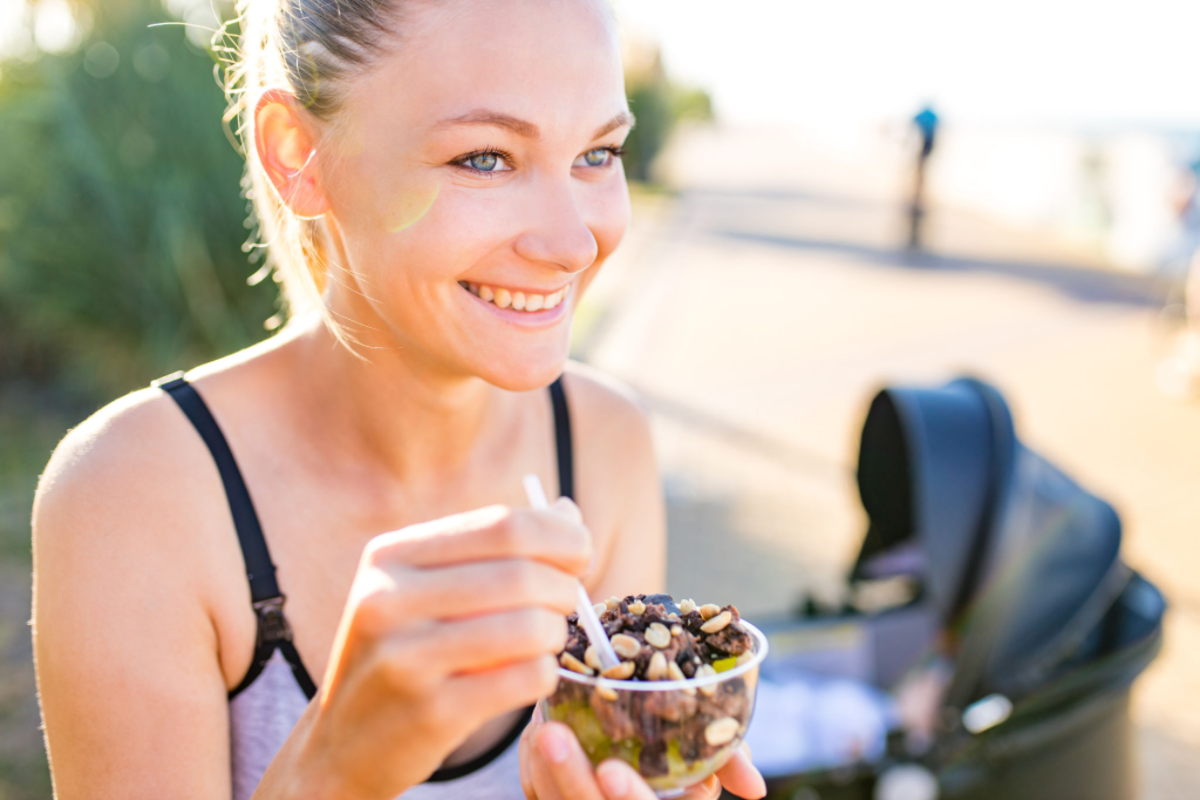Becoming a mother is an extraordinary journey filled with love and joy, but it also brings significant physical changes. As a new mom, you’re embarking on this incredible adventure of nurturing and caring for your precious little one. However, amidst the sleepless nights and diaper changes, it’s essential to prioritize your well-being, and that’s where postpartum fitness comes into play.
Welcome to the Motherhood Center in Houston, Texas. For over two decades, we’ve been a trusted wellness resource for families with infants, young children, and pregnant moms. Our mission is to provide a nurturing environment where mothers can find the guidance and care they need to thrive during pregnancy, childbirth, and beyond. From prenatal and parenting education classes to yoga and fitness sessions, massage services, baby doula services, and assistance in finding childcare, Motherhood Center is your partner on the journey of motherhood.
We’re excited to share our expertise on postpartum fitness, helping new moms achieve balance and well-being during this incredible chapter of their lives. So, let’s dive into the world of postpartum fitness together.
Recovery and Healing
The postpartum period is a time of remarkable change and adjustment for your body. After the incredible feat of childbirth, your body requires time and care to heal and recover. Understanding these changes and nurturing your body during this phase is paramount. Let’s delve into the essential aspects of postpartum recovery and healing, ensuring that you’re equipped with the knowledge and self-care practices necessary for a healthy transition into post-baby life.
Understanding Your Body’s Postpartum Changes
In the days and weeks following childbirth, your body goes through a series of remarkable transformations. It’s crucial to be aware of these changes to better navigate the postpartum journey. One of the most notable changes is uterine involution, where your uterus shrinks back to its pre-pregnancy size. This process may be accompanied by mild cramping, akin to menstrual cramps, which is a normal part of the healing process.
Additionally, postpartum bleeding, known as lochia, is a natural occurrence as your body expels the excess blood and tissue from the uterine lining. This bleeding typically starts as bright red and gradually changes to a lighter color over a few weeks. Understanding these changes and what to expect is the first step in promoting your healing journey.
The Importance of Pelvic Floor Health
The pelvic floor muscles play a pivotal role in supporting your pelvic organs and maintaining bladder and bowel control. During pregnancy and childbirth, these muscles undergo significant stress, making postpartum care essential. Pelvic floor exercises, often called Kegel exercises, are a vital component of your recovery.
Performing Kegel exercises can help strengthen your pelvic floor muscles, aid in bladder control, and promote healing. To perform Kegels, simply contract and relax your pelvic muscles as if you were stopping the flow of urine. Regular, mindful practice can contribute to faster healing and better overall pelvic health.
Caring for C-Section Incisions
In cases where a cesarean section (C-section) delivery is necessary, additional attention to incision care is essential. Caring for your C-section incision is crucial to prevent infection and promote optimal healing. Keep the incision clean and dry, and follow your healthcare provider’s instructions regarding wound care.
It’s important to note that C-section incisions typically take longer to heal compared to vaginal deliveries. Be patient with yourself and listen to your body’s signals. Avoid strenuous activities that could put excessive strain on your incision site, and consult your healthcare provider if you notice any signs of infection or complications.
Taking the time to understand and prioritize your postpartum recovery and healing is a compassionate act of self-care. By recognizing the changes your body goes through and nurturing it accordingly, you set the foundation for a healthier, more comfortable postpartum experience. In the next section, we’ll explore early postpartum exercises that can assist in this healing process.
Getting Started: Postpartum Exercises
As your body gradually heals in the postpartum period, it’s essential to ease into exercises that support your recovery without overexertion. Early postpartum exercises focus on gentle movements and activities that aid in restoring strength, flexibility, and overall well-being. At Motherhood Center in Houston, Texas, we recognize the significance of these early exercises, and we offer a variety of classes to support new moms on their fitness journey, including mom and baby yoga.
Gentle Breathing and Relaxation Techniques
The early postpartum period is a time for rest and recovery, so starting with gentle breathing and relaxation techniques is a beautiful way to ease back into exercise. Deep breathing exercises can help reduce stress and anxiety, promote relaxation, and improve oxygen flow to your healing body. By incorporating mindful breathing into your daily routine, you can create a sense of calm and balance during this transitional phase.
Pelvic Tilts and Floor Exercises
Pelvic tilts and floor exercises are excellent choices for reawakening your core and gently engaging your abdominal muscles. These exercises help in realigning your pelvis and strengthening your lower back muscles, which can be particularly beneficial after childbirth. Pelvic tilts involve lying on your back with bent knees and gently tilting your pelvis upward while engaging your core muscles.
Walking for Recovery
One of the simplest and most effective early postpartum exercises is walking. Taking leisurely walks, either alone or with your baby in a stroller, can help improve circulation, boost your mood, and gently rebuild your stamina. It’s a great way to introduce movement into your routine without placing undue stress on your body.
Mom and Baby Yoga at Motherhood Center
At Motherhood Center, we understand that the postpartum period can be a time when you’re eager to regain strength, but it’s also essential to bond with your new baby. That’s why we offer mom and baby yoga classes that provide the perfect balance of self-care and connection. These classes create a nurturing space for new moms to practice yoga while engaging with their infants.
Mom and baby yoga sessions at Motherhood Center typically incorporate gentle postures and stretches suitable for postpartum bodies. They are designed to help new moms regain flexibility, tone muscles, and alleviate common postpartum discomforts. Additionally, the classes offer an opportunity for you to connect with other new moms, fostering a sense of community and support during this transformative phase of motherhood.
Building Core Strength
Rebuilding core strength is a crucial step in your postpartum fitness journey. Your core muscles, which include the abdominal muscles and the muscles around your lower back and pelvis, play a vital role in providing stability and support to your body. During pregnancy and childbirth, these muscles undergo significant changes, and it’s important to gently and effectively rebuild their strength to support your overall well-being.
Pelvic Floor Exercises
Pelvic floor exercises, often called Kegel exercises, are a cornerstone of core strength recovery. These exercises target the muscles that support your pelvic organs and are essential for postpartum recovery. By performing Kegel exercises regularly, you can help strengthen your pelvic floor muscles, improve bladder control, and promote healing in this area.
To perform Kegels, start by identifying the muscles you use to stop the flow of urine midstream. Once you’ve located these muscles, contract and hold them for a few seconds before releasing them. Repeat this exercise several times a day, gradually increasing the duration of your contractions as your strength improves.
Diastasis Recti: What You Need to Know
Diastasis recti is a condition that some women experience after pregnancy, where the abdominal muscles separate along the midline of the abdomen. This separation can weaken the core and lead to issues such as lower back pain and poor posture. It’s essential to check for diastasis recti and, if present, to address it through specific exercises.
Performing exercises that target diastasis recti can help in closing the gap between the separated muscles and strengthening the core. Avoid exercises that exacerbate the condition, and consult with a healthcare provider or a fitness expert for guidance on safe and effective diastasis recti exercises.
Core-Strengthening Workouts
As your body continues to heal, you can gradually introduce core-strengthening workouts into your postpartum fitness routine. These workouts should focus on engaging and strengthening the core muscles without causing strain or discomfort. Exercises like modified planks, gentle leg lifts, and pelvic tilts can be effective in building core strength while being mindful of your postpartum body.
It’s crucial to listen to your body and progress at a pace that feels comfortable for you. Overexertion or pushing too hard can hinder your recovery, so prioritize safe and controlled movements as you work on rebuilding your core strength.
Cardiovascular Conditioning
Cardiovascular conditioning is an integral part of postpartum fitness, as it helps improve endurance, boost energy levels, and promote overall well-being. However, it’s important to approach cardiovascular exercises with caution and gradually reintroduce them into your postpartum routine. Let’s explore how to safely incorporate cardiovascular conditioning after childbirth.
Gradual Return to Cardio Workouts
In the early postpartum weeks, your focus should primarily be on rest, recovery, and gentle exercises. As your body heals, you can gradually reintroduce cardiovascular workouts. Start with low-impact exercises such as brisk walking or stationary cycling. These activities are gentle on your joints and provide an excellent starting point for rebuilding your cardiovascular fitness.
Listen to your body and be mindful of any discomfort or fatigue. It’s entirely normal to experience reduced stamina initially. Over time, as your strength and endurance improve, you can progress to more intense cardio workouts.
Low-Impact Options for New Moms
Low-impact cardio exercises are ideal for new moms as they reduce stress on your joints while still delivering cardiovascular benefits. Swimming or water aerobics, for example, provide an excellent full-body workout without the impact associated with activities like running or high-impact aerobics.
Dancing, specifically in the form of Zumba or other low-impact dance classes, can also be an enjoyable way to get your heart rate up while having fun. These options allow you to reap the benefits of cardio exercise without placing excessive strain on your postpartum body.
Monitoring Intensity and Heart Rate
As you progress in your postpartum fitness journey, it’s essential to monitor the intensity of your cardiovascular workouts. Pay attention to your heart rate, and aim to stay within a moderate range. Utilize the “talk test” – you should be able to carry on a conversation while exercising without becoming breathless. If you find it difficult to talk or experience any discomfort, it may be a sign that you’re pushing too hard.
Remember that every woman’s postpartum journey is unique, and what feels right for one person may not be suitable for another. Always consult with your healthcare provider before starting or modifying your exercise routine, especially if you’ve had any complications during childbirth or pregnancy.
Cardiovascular conditioning can be an empowering addition to your postpartum fitness routine. By approaching it with care, patience, and gradual progression, you can enhance your cardiovascular health while supporting your overall postpartum well-being.
Strength Training for New Moms
Strength training is a vital component of postpartum fitness, offering numerous benefits for new moms. It helps rebuild muscle mass, enhance metabolism, and improve overall strength and endurance. As your body continues to recover from childbirth, incorporating the right strength training exercises can be both empowering and effective in achieving your postpartum fitness goals.
Resistance Bands and Bodyweight Exercises
For many new moms, the convenience of strength training with minimal equipment is a game-changer. Resistance bands are an excellent tool for adding resistance to your workouts without the need for heavy weights. They come in various levels of resistance, allowing you to start with a comfortable level and gradually increase as you gain strength.
Bodyweight exercises, such as squats, lunges, push-ups, and planks, are also highly effective for strength training. These exercises engage multiple muscle groups and can be adapted to your fitness level. Begin with modified versions and progress as your strength improves.
Proper Lifting Techniques
Lifting and carrying your baby can be a significant part of your daily routine as a new mom. To prevent strain and injury, it’s essential to learn and practice proper lifting techniques. Always bend at the hips and knees when picking up your baby, keeping your back straight. Engage your core muscles as you lift, which provides added support to your lower back.
Incorporate lifting and carrying your baby into your strength training routine. For instance, holding your baby while doing squats or lunges adds resistance and makes the workout more engaging. This integration allows you to bond with your baby while working on your strength and fitness.
Building Upper Body Strength
As a new mom, you’ll often find yourself carrying your baby, car seat, and diaper bags, which can put a strain on your upper body. Building upper body strength is essential to help you navigate these daily tasks with ease. Include exercises like bicep curls, tricep dips, and shoulder presses to target your arms and shoulders.
Incorporate these upper body strength exercises into your routine, gradually increasing the weight or resistance as you become more comfortable. Strong upper body muscles not only make daily tasks more manageable but also contribute to better posture and overall physical well-being.
Strength training for new moms is a transformative journey that empowers you to regain your strength and vitality while adapting to the demands of motherhood. Remember that progress may be gradual, and it’s essential to listen to your body, making adjustments as needed to ensure a safe and effective workout.
Yoga and Flexibility
Yoga and flexibility exercises offer a holistic approach to postpartum fitness, focusing not only on physical strength but also on mental and emotional well-being. These practices can help new moms regain flexibility, reduce stress, and find a sense of balance amid the demands of motherhood. At Motherhood Center in Houston, Texas, we recognize the importance of yoga and flexibility in postpartum recovery, and we offer specialized classes like mom and baby yoga to support your journey.
Restorative Yoga for Postpartum Moms
Restorative yoga is a gentle and nurturing practice that emphasizes relaxation and healing. It involves holding poses with the support of props like blankets, bolsters, and blocks, allowing your body to release tension and stress. This practice is particularly beneficial for new moms as it promotes deep relaxation and helps alleviate common postpartum discomforts such as back pain and fatigue.
Restorative yoga sessions provide you with the opportunity to reconnect with your body and breath while fostering a sense of calm and tranquility. It’s an ideal practice for those early postpartum days when rest and self-care are paramount.
Stretches to Relieve Tension
The physical demands of caring for a newborn can lead to muscle tension and stiffness. Incorporating gentle stretches into your routine can help alleviate this tension and improve overall flexibility. Focus on stretches that target areas prone to tightness, such as the neck, shoulders, and hips.
Regular stretching can also enhance your range of motion and contribute to better posture, which is essential for new moms who may spend a significant amount of time nursing or carrying their baby.
Incorporating Mindfulness
Yoga is not just about physical postures; it also encourages mindfulness and mental well-being. Practicing mindfulness through yoga can help you manage the stresses of new motherhood, enhance your emotional resilience, and promote a positive mindset.
Breathing exercises, meditation, and guided relaxation techniques are often integrated into yoga classes, allowing you to cultivate a sense of inner peace and presence. These practices can be invaluable for managing the emotional ups and downs that often accompany the postpartum period.
Mom and Baby Yoga at Motherhood Center
At Motherhood Center, we understand that spending quality time with your baby is a top priority. That’s why we offer mom and baby yoga classes designed to create a nurturing environment where you can practice yoga while bonding with your infant. These classes are specially tailored for postpartum bodies, ensuring a safe and enjoyable experience for both mom and baby.
Mom and baby yoga sessions typically incorporate gentle poses that involve your baby, such as baby massage, baby stretches, and interactive movements. These classes provide an opportunity for you to connect with your baby, meet other new moms, and foster a sense of community and support during this transformative phase of motherhood.
Incorporating yoga and flexibility exercises into your postpartum fitness routine can be a profound way to nurture both your physical and emotional well-being. These practices offer not only physical benefits but also the opportunity to cultivate mindfulness and find moments of serenity amid the beautiful chaos of new motherhood.
Nutrition and Postpartum Fitness
Proper nutrition plays a pivotal role in postpartum fitness and recovery. As a new mom, your body needs essential nutrients to heal, regain strength, and support breastfeeding if you choose to nurse your baby. Understanding how to nourish your body effectively during this phase is essential. At Motherhood Center in Houston, Texas, we offer comprehensive nutrition support, including specialized breastfeeding nutrition classes, to help new moms on their postpartum fitness journey.
Fueling Your Recovery
The postpartum period is a time when your body requires additional nutrients to heal from childbirth and support your energy needs. Adequate protein, vitamins, and minerals are crucial for tissue repair and overall well-being. Ensure your diet includes a balance of lean proteins, whole grains, fruits, vegetables, and healthy fats to provide your body with the necessary nutrients.
If you’re breastfeeding, it’s essential to consume extra calories to meet the demands of milk production. Focus on nutrient-dense foods, such as leafy greens, legumes, and lean proteins, to ensure you’re getting the right balance of nutrients.
Hydration Tips for Breastfeeding Moms
Staying well-hydrated is vital, especially if you’re breastfeeding. Breast milk production requires additional fluids, so aim to drink plenty of water throughout the day. Keep a water bottle handy and take sips regularly, even if you don’t feel particularly thirsty.
Caffeine and alcohol intake should be limited, as these substances can pass into breast milk and affect your baby. It’s advisable to consult with a healthcare provider or a lactation consultant for guidance on caffeine and alcohol consumption while breastfeeding.
Meal Planning for Sustainable Energy
As a new mom, you may find it challenging to prioritize meal preparation amid the demands of caring for your baby. However, meal planning can be a game-changer in ensuring you have nourishing meals readily available. Prepare simple, balanced meals and snacks in advance, making it easier to make healthy choices when you’re busy or tired.
Incorporate foods rich in iron and calcium, as these nutrients are essential for postpartum recovery and breastfeeding. Leafy greens, lean meats, dairy products, and fortified cereals are excellent sources of these nutrients.
Breastfeeding Nutrition Classes at Motherhood Center
At Motherhood Center, we offer specialized breastfeeding nutrition classes designed to provide new moms with valuable insights into nourishing their bodies while breastfeeding. These classes cover topics such as optimizing your diet for milk production, identifying foods that may affect your baby, and managing any dietary concerns or restrictions.
Breastfeeding nutrition classes provide a supportive and informative environment where you can connect with other breastfeeding moms and gain practical knowledge to enhance your postpartum nutrition. Our goal is to empower you with the information and resources you need to make informed dietary choices during this transformative period of motherhood.
Incorporating proper nutrition into your postpartum fitness journey is a profound act of self-care. By nourishing your body with the right foods and staying well-hydrated, you can support your recovery, regain strength, and provide essential nutrients for both yourself and your baby if you’re breastfeeding.
Staying Motivated and Safe
Maintaining motivation and ensuring safety are crucial aspects of your postpartum fitness journey. While it can be challenging to stay consistent with your exercise routine amidst the demands of motherhood, it’s essential to prioritize your well-being and long-term fitness goals. Here are some tips to help you stay motivated and safe on your postpartum fitness path.
Setting Realistic Goals
Postpartum fitness is a unique journey, and it’s essential to set realistic and achievable goals. Recognize that your body has undergone significant changes during pregnancy and childbirth, and it may take time to regain your pre-pregnancy strength and fitness level. Be patient with yourself and celebrate small victories along the way.
Consider setting both short-term and long-term goals. Short-term goals can provide a sense of accomplishment and keep you motivated, while long-term goals can help you stay focused on your overall fitness journey.
Incorporating Exercise into Your Daily Routine
Finding time for exercise as a new mom can be challenging, but integrating it into your daily routine can make it more achievable. Look for opportunities to be active throughout the day, such as taking short walks with your baby, doing quick bodyweight exercises during nap time, or practicing mindfulness and deep breathing exercises while soothing your baby.
Additionally, consider enlisting the support of your partner, family members, or friends to help with childcare, allowing you dedicated time for your fitness routine.
The Importance of Rest and Recovery
In the quest for postpartum fitness, it’s vital to remember that rest and recovery are equally important. Your body needs time to heal and rejuvenate. Adequate sleep and relaxation are critical not only for your physical well-being but also for your mental and emotional health.
Overtraining or pushing yourself too hard can lead to burnout and potential injury. Listen to your body, and if you’re feeling fatigued or experiencing discomfort, it’s okay to take a break. Restorative practices like gentle yoga and relaxation techniques can be valuable in your recovery.
Seeking Professional Guidance
If you’re uncertain about the best approach to postpartum fitness or have specific concerns, don’t hesitate to seek professional guidance. Consult with a healthcare provider, a certified fitness trainer with expertise in postpartum fitness, or a physical therapist. These experts can provide personalized advice and ensure that your fitness routine is safe and tailored to your individual needs and goals.
Staying motivated and safe on your postpartum fitness journey is essential for your well-being and long-term health. By setting achievable goals, incorporating exercise into your daily routine, prioritizing rest and recovery, and seeking professional guidance when needed, you can embrace the transformative power of postpartum fitness while taking care of yourself and your growing family.
Conclusion
Your postpartum journey is a remarkable and transformative phase in your life, brimming with the love, joy, and unique challenges that come with motherhood. Throughout this article, we’ve explored the essential aspects of postpartum fitness, from recovery and healing to strength training, cardiovascular conditioning, yoga, flexibility, and proper nutrition. We’ve also emphasized the importance of staying motivated and safe while prioritizing self-care.
As you navigate this beautiful journey, remember that you are not alone. At Motherhood Center in Houston, Texas, we are here to support you every step of the way. Whether you’re interested in mom and baby yoga, breastfeeding nutrition classes, or a wide range of other resources tailored to new moms and growing families, we have the expertise and compassionate care to help you thrive during pregnancy, childbirth, and beyond.
Your well-being is our top priority, and we invite you to reach out to us for more information and personalized guidance on your postpartum fitness journey. Embrace this transformative time with confidence, knowing that you have a supportive community at Motherhood Center to help you navigate the joys and challenges of motherhood. We look forward to being a part of your postpartum fitness and wellness experience. Contact us today to learn more and embark on your journey toward health, vitality, and balance.
FAQs
What is the ideal time to start postpartum fitness exercises?
It’s recommended to consult with your healthcare provider first. Generally, gentle postpartum exercises can start within the first few weeks, with a focus on gradual progression and listening to your body’s cues.
Can I do postpartum fitness exercises if I had a C-section?
Yes, but it’s crucial to wait until you’ve received clearance from your healthcare provider, usually around 6-8 weeks post-surgery. Start with low-impact exercises and follow guidance to ensure safe recovery.
How can postpartum fitness benefit breastfeeding moms?
Postpartum fitness can improve overall well-being and help with postpartum recovery. For breastfeeding moms, it may enhance energy levels and mood while supporting the body’s nutritional needs for milk production.
Is it safe to practice yoga shortly after giving birth?
Yes, gentle postpartum yoga can be safe and beneficial, but it’s essential to choose classes designed for new moms and follow your healthcare provider’s advice. Postpartum yoga helps with relaxation, flexibility, and core strength.
What if I can’t find time for postpartum fitness with a newborn?
Incorporate short exercises into your daily routine, such as gentle stretches during naptime or brisk walks with your baby in a stroller. Prioritizing self-care, even in small increments, can have a positive impact on your postpartum journey.
